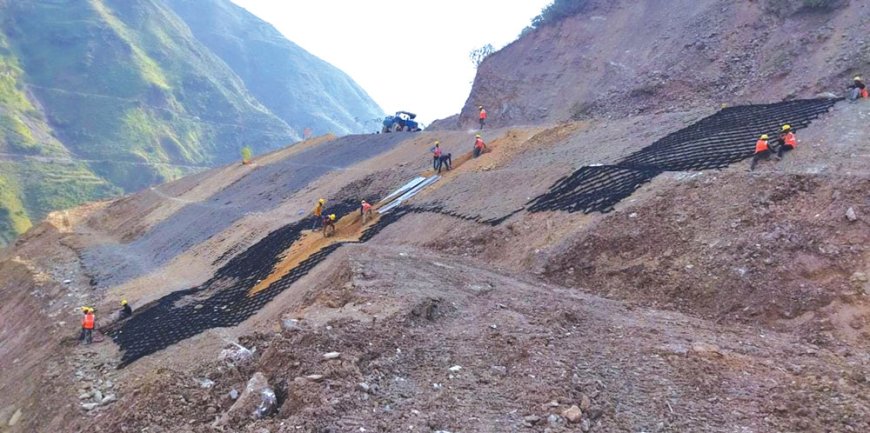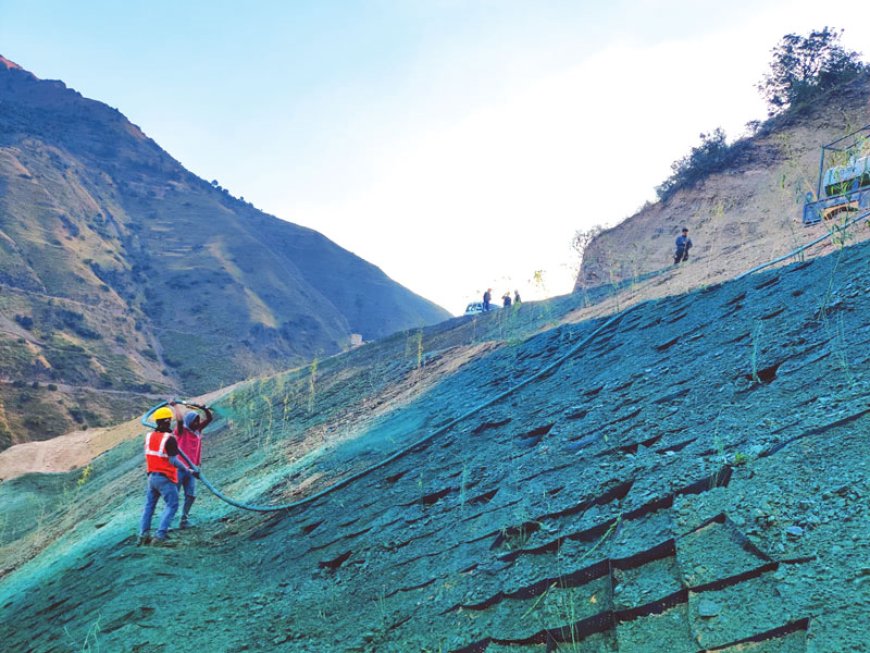Transforming erosion control on NH 707 Gumma-Fediz section

A breakthrough in green highways with GTI Hydroseeding Technology
As part of the Green National Highways Corridor Project (GNHCP), an initiative aligned with the Bharatmala Pariyojana of the Government of India, the primary objective is to enhance the efficiency of India's transportation network by implementing sustainable and resource-efficient solutions. Among the designated corridors is the Paonta Sahib to Guma Section (km 0.00 to km 97.00) of NH-707 in Himachal Pradesh. The Ministry of Road Transport and Highways (MoRTH) aims to rehabilitate and upgrade this section to a 2-lane/2-lane with paved shoulders configuration.
Problem
The Gumma-Fediz section, situated entirely in Himachal Pradesh, presented challenges, including hill cut slopes and a significant dumping zone on the valley side. The primary hurdle was the limited space for the movement of the GTI hydroseeder machine in certain locations.
Scope of the project
The project focused on providing a detailed design report and executing work for slope erosion control/protection, specifically employing bioengineering methods, along the chainage of NH 707 Gumma-Fediz section (package 05) in Himachal Pradesh (km 94.900 to km 103.400).
Hydroseeding only – 3,540 sqm
Hydroseeding with Geocell – 3,721 sqm
Project duration – 3 months

Project challenges
The project faced challenges related to hill cut slopes and a substantial dumping zone on the valley side. The constrained space for the GTI hydroseeder machine's movement added complexity to the execution.
Solution
After analyzing geotechnical reports and conducting on-site assessments, four bioengineering solutions were proposed. This discussion focuses on Hydroseeding and Geocell with Hydroseeding.
Hydroseeding
Hydroseeding is an expedited planting process that utilizes a mixture of seeds, mulch, fertilizers, and activators combined with water in a hydroseeder tank to create a dense slurry. This technique has gained popularity, especially on hill slopes, for erosion control and rapid plantation. The application is performed with pressure using a hydroseeder on the slope surfaces, ensuring quick completion. Hydroseeding not only reduces installation costs and minimizes soil loss but also mitigates the turbidity of effluent runoff.

Geocell with Hydroseeding
The cellular structure of geocell effectively holds the planting soil to the slope, creating a stable and conducive environment for plant growth. This erosion control method establishes a protective layer on the slope, preventing direct impact from rainfall. The fully-grown plants' roots penetrate beyond the protective layer, providing additional stability to the slope.
Conclusion
The integration of GTI Hydroseeding Technology, specifically Hydroseeding and Geocell with Hydroseeding, marks a significant advancement in slope erosion control within three months on the NH 707 Gumma-Fediz section. This innovative approach not only addresses the unique challenges of the project but also aligns with the broader vision of creating sustainable and resilient green highways across India.












